How to Capture Inspiration: Students Learn an Idea-Generation Technique Crucial to Semiconductor Innovation
Culture
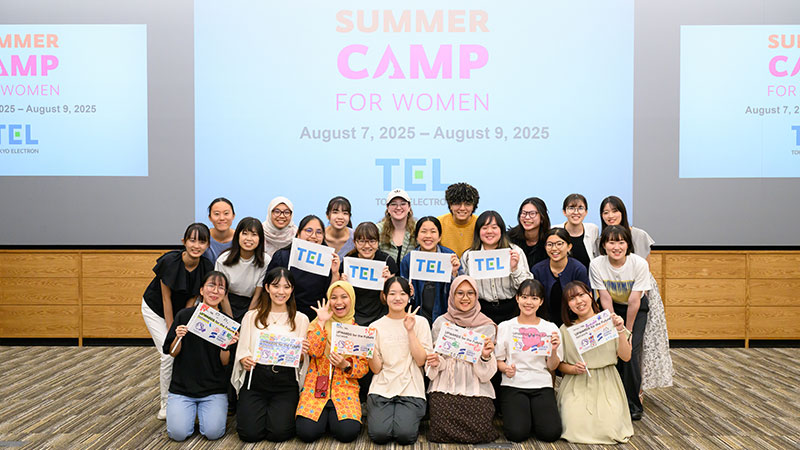
Semiconductors are the brains of electronic devices that support our affluent lifestyles. The key to accelerating semiconductor innovation depends on advancing a production equipment. As a leading manufacturer of semiconductor equipment, Tokyo Electron (TEL) recognizes that inspiration drives innovation.TEL hosted a workshop for students interested in semiconductor careers, offering hands-on lessons on how to find inspiration. Their journey to discover new inspiration and explore future potentials has just begun.
Experiencing the “Aha” Moment through Origami Group Work
At the start of the workshop, students from Japanese and US universities were divided into six groups. The groups competed against each other to solve the given problems and achieve the highest score. First of all, each group was asked to establish its own discussion rules. They proposed various ideas to make the workshop more productive, such as: ‘Listen to others’ opinions before disagreeing,’ ‘Each person should share at least one idea,’ and 'Above all, enjoy yourselves!’
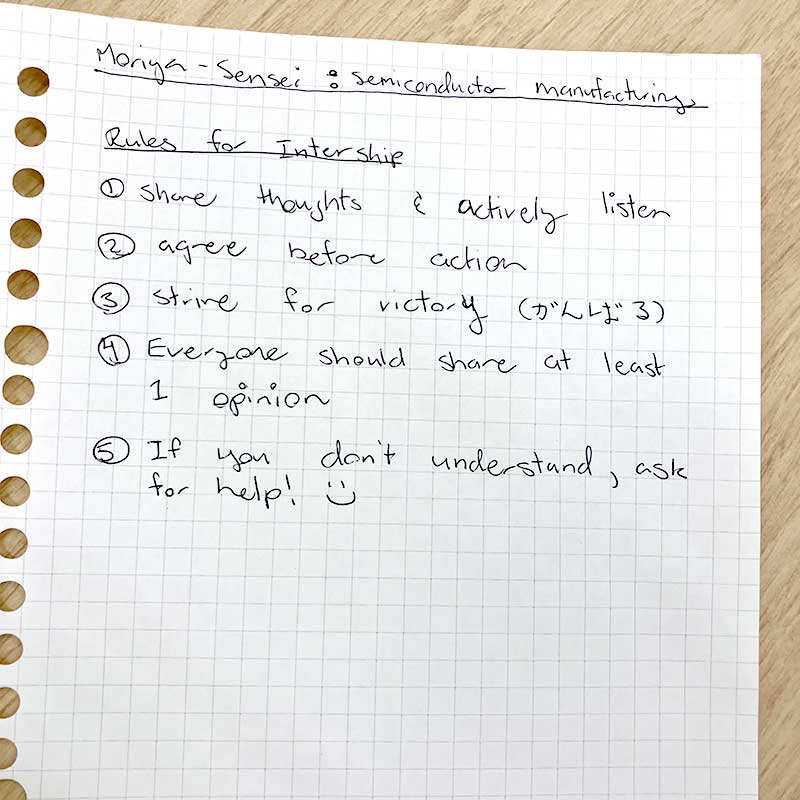
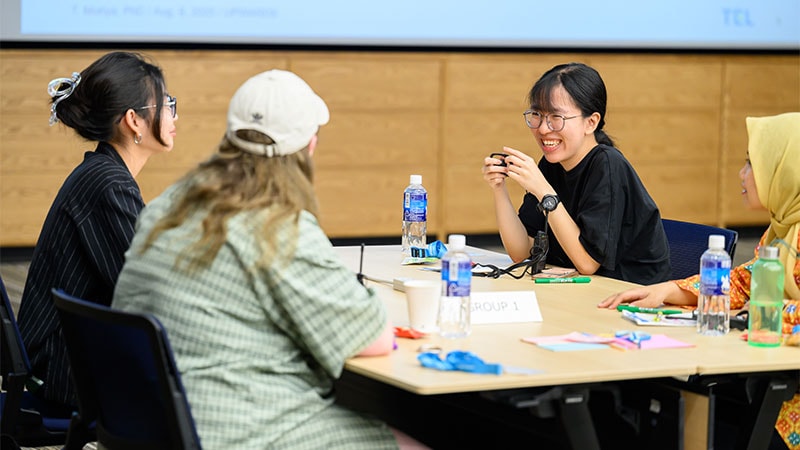
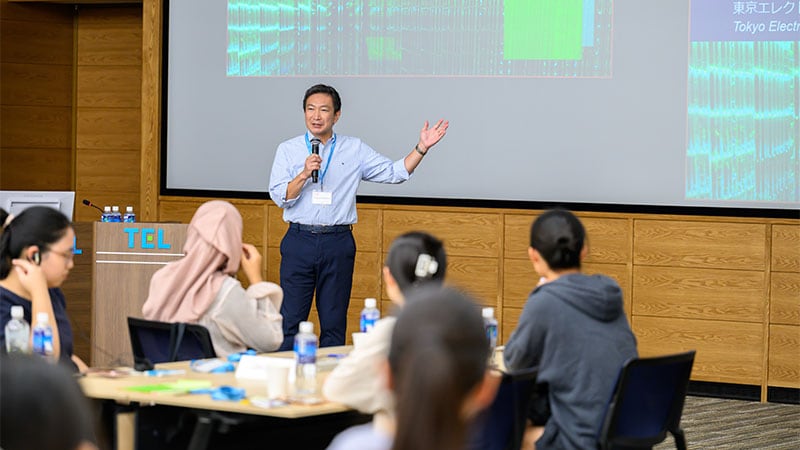
The workshop was led by Tsuyoshi Moriya, a leading engineer at TEL. After finishing graduate school, he worked for a semiconductor manufacturer. However, he soon realized that semiconductor equipment was essential for producing high-quality chips and joined TEL. Moriya, who has filed over 200 patent applications, believes that being the first in the world to conceive new ideas is key to becoming an outstanding engineer. In other words, inspiration is what you need. To let the students experience how inspiration comes to them, Moriya assigned them the first task of solving an origami problem. Each group received a square piece of paper with one corner cut off. Their task was to fold it twice, make a single cut, and then assemble the pieces into a perfect square.
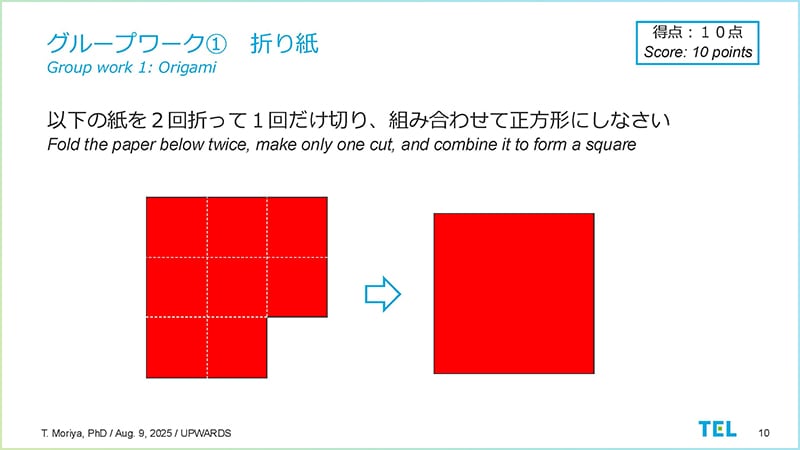
The students in Group 2 immediately started scribbling equations and drawing lines on memo pads. While the other groups struggled to figure it out by folding the origami paper or dividing it into smaller sections with horizontal and vertical lines, Group 2 members discussed something over diagrams marked with diagonal lines. After a while, Group 2 arrived at the solution without any hints, much to everyone’s astonishment and applause.
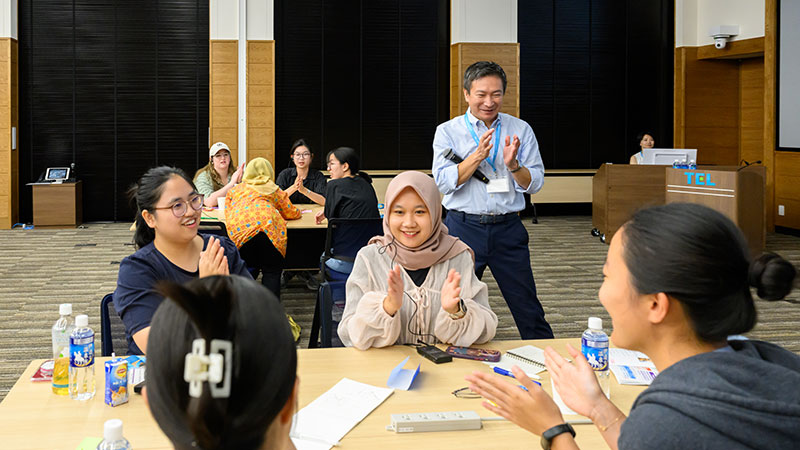
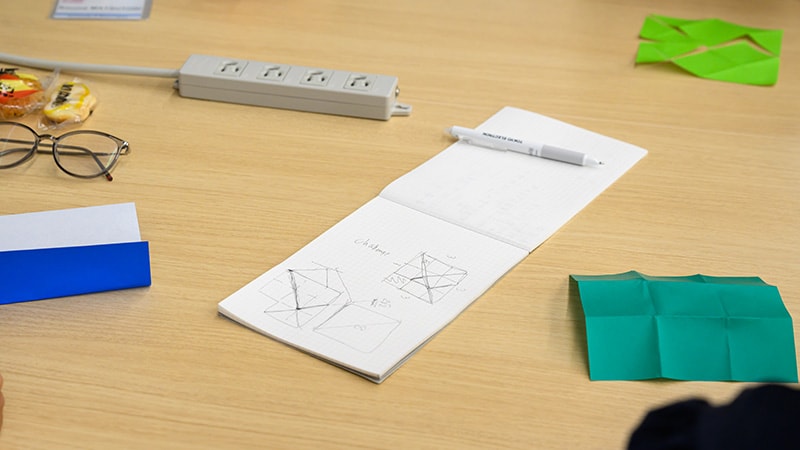
They were then given a few hints, including “The total area is 8 unit squares,” and “The length of one side of the resulting square is therefore 2√2 units.” One student after another was inspired by the idea of diagonal lines, which led them to the correct answer. After these inspirational moments, the students eagerly nodded as Moriya said, “This is the kind of inspiration we seek and receive daily as we develop semiconductor equipment technologies.”
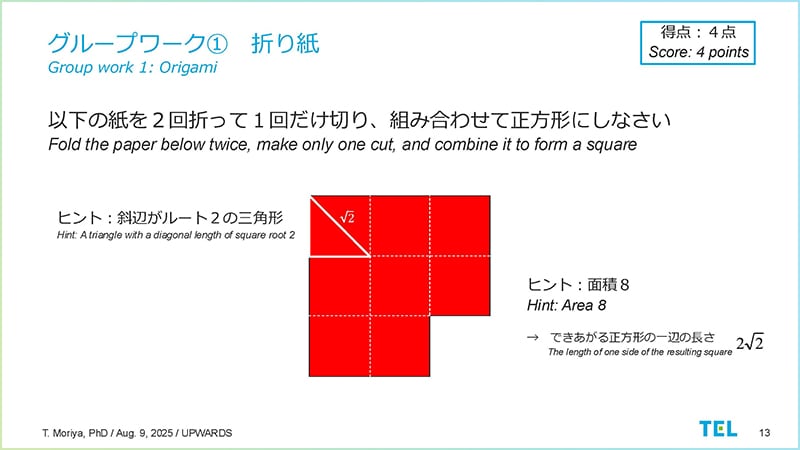
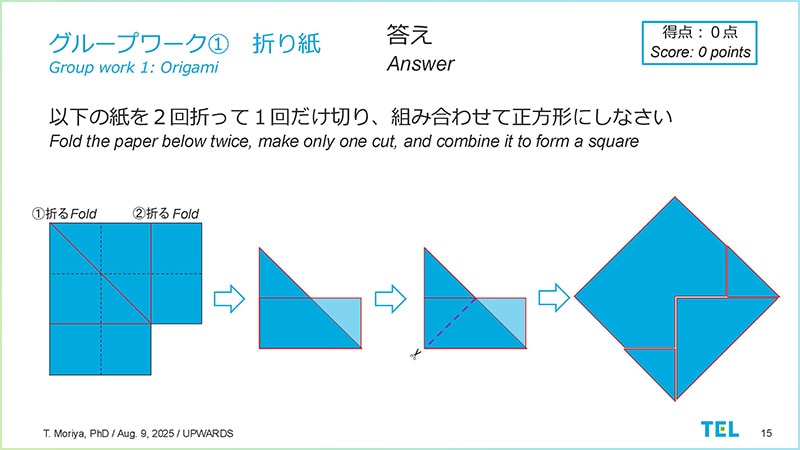
Tricks for Capturing Inspiration
“It's not easy to find inspiration out of thin air, unless you're a genius,” Moriya concedes. However, he thinks there are methods for capturing inspiration and suggested trying the following three tips:
1. See if you can identify past experiences and memories that seem to fit a certain pattern.
2. Extend feelers to other disciplines and look for similar phenomena in other fields.
3. Apply various theories from physics and chemistry to scientifically analyze the phenomenon.
In the next session, the participants learned about the manufacturing process of the now ubiquitous semiconductor chip. It takes months to process silicon ingots into semiconductor devices using sophisticated process technologies. The students listened intently as the lecturer explained the purpose of nanometer-level processing and the types of materials employed.
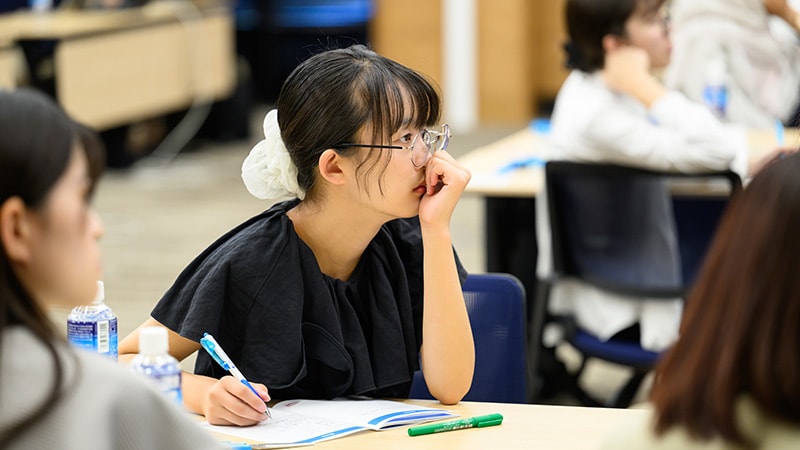
During the next work session, the participants were given ten minutes to list factors common to semiconductor manufacturing and rice farming. Many students found the comparison of the two different industries perplexing. Japanese members explained the rice cultivation process to international students unfamiliar with rice farming, after which they worked together to produce ideas.
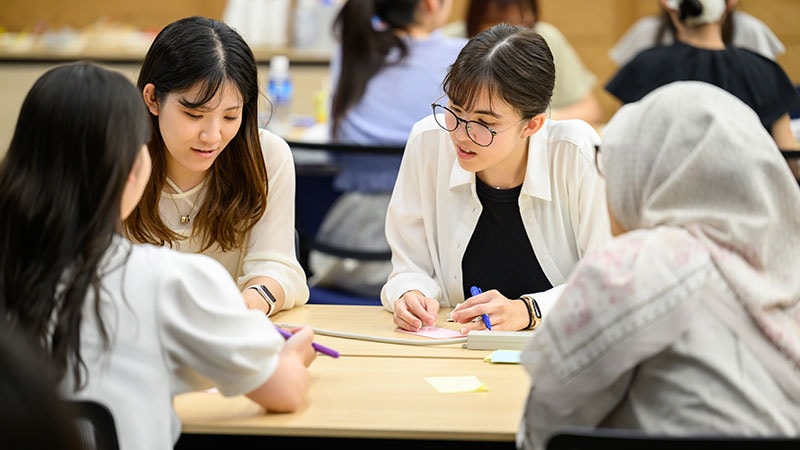
When the time was up, each group announced their best answers, which included the following: “Both take months to produce,” “Clean water is needed for both operations,” “Contamination must be prevented,” and “Both contribute to GDP.” The variety of opinions stimulated all participants.
The work session was a practice in “looking for similar phenomena in other fields,” which is one of the aforementioned techniques for capturing inspiration. The students understood the importance of keeping an eye on similar cases in different fields. As the lecture and work sessions progressed, the participants began to understand how semiconductor manufacturing works, which made them more engaged in the discussion than they initially were.
AI Combined with Human Intelligence Opens up Infinite Possibilities
The next theme for discussion was, “How do you apply AI to semiconductor manufacturing?” Since AI is a popular topic among forward-thinking students, the answers came in rapid succession. The answers included “capturing trends,” “gathering quality improvement ideas,” and “leveling employee knowledge,” all of which fell under the category of information management. Other answers, such as “fab layout optimization” and “demand forecasting,” focused on data analysis.
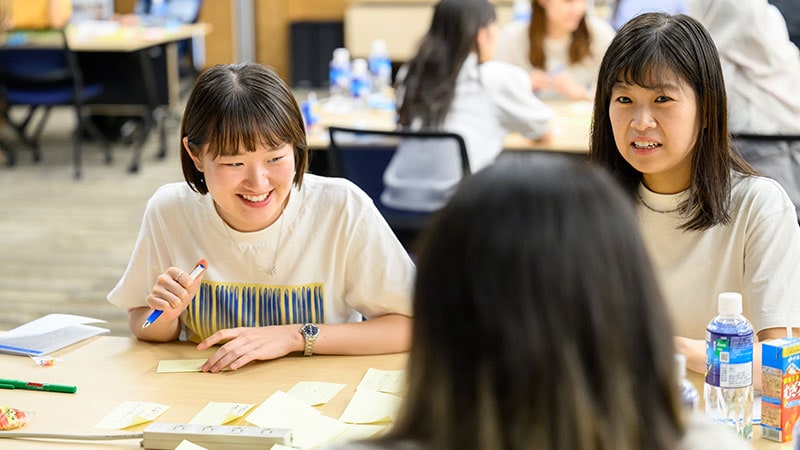
Moriya then provided examples of how AI is used in the development of semiconductor manufacturing technology, advocating for the fusion of human and artificial intelligence. The students listened attentively as they learned how AI-based data analysis and machine learning are used to solve problems such as increasing yield and productivity, streamlining lab testing, and searching for materials. To deepen their understanding of the use of AI, they participated in a numbers game. The numbers from 1 to 100 were displayed in a seemingly random pattern on the screen, and the participants were asked to count them in order within 30 seconds.
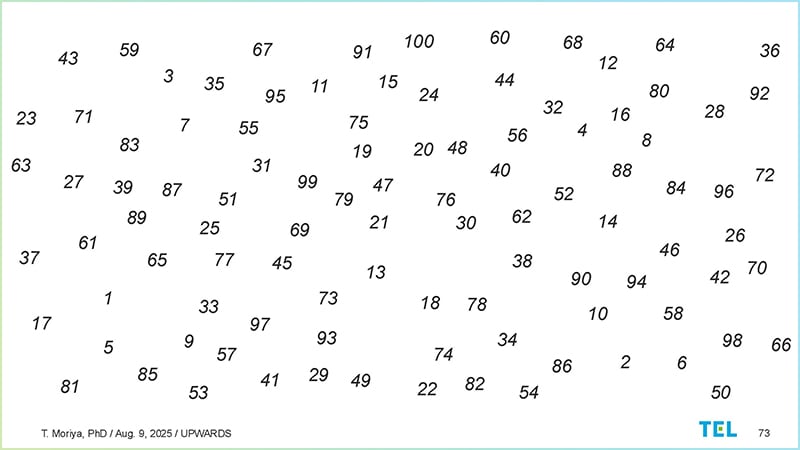
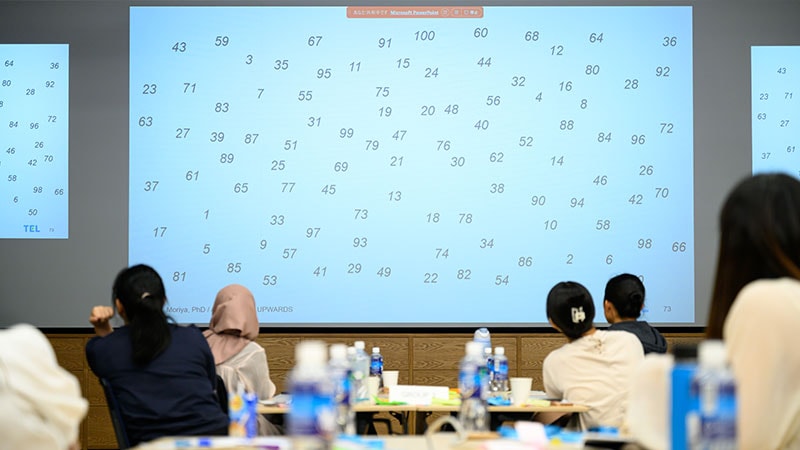
On their first attempt, one student counted up to 40, while most others managed around 15. Before the second attempt, they were given a hint: The numbers are distributed regularly among the quadrants 1 through 4, with each ascending number to be found in the next quadrant. After learning about this pattern, more than half of the participants performed better.
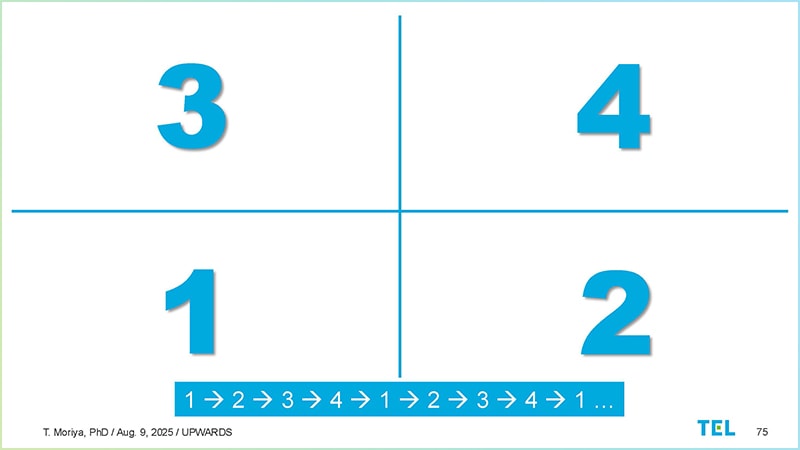
Then another hint was given that revealed an even more detailed pattern. However, the students seemed confused by the additional pattern. How did they perform in the third attempt?
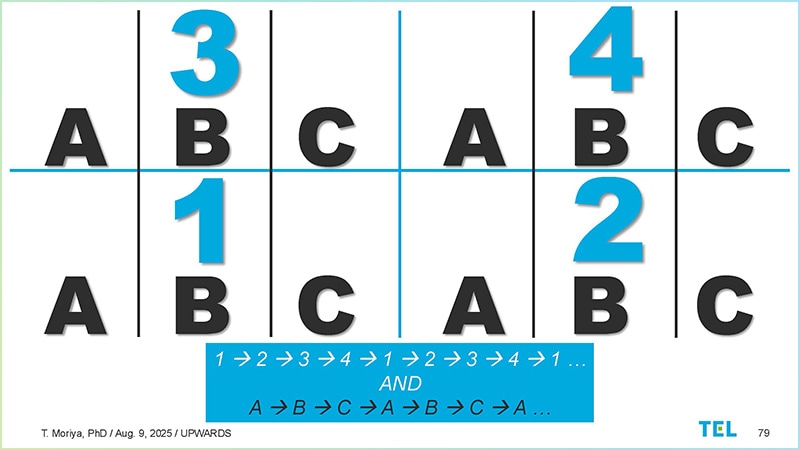
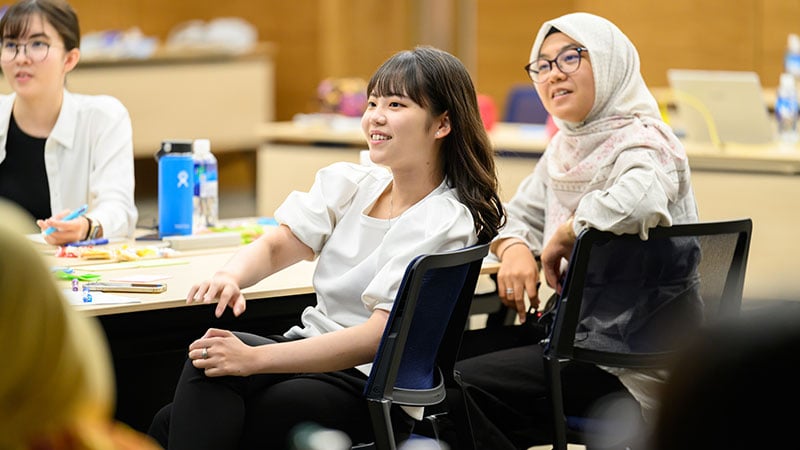
Only two students performed better on their third try: the rest did not outdo themselves. It was baffling that more hints did not lead to better performance. Moriya explained, “Showing patterns can boost creativity, but too many patterns can hinder performance.” In other words, the right kind of pattern is necessary to improve one’s abilities.
Moriya added that identifying optimal patterns is one of AI’s specialties. We can enhance the outcome of R&D by combining data analysis capabilities of AI with human knowledge and insight. Moriya emphasized, ‘It’s pointless to ask whether human intelligence surpasses AI. Combining rich human knowledge with AI unlocks limitless possibilities.’ Having just experienced the truth of these words through the game, the students were fascinated by the possibility of collaboration between AI and humans.
Enjoyable Workshop: Having Fun Leads to a Prosperous Future
At the end of all sessions, Group 6 was declared the winner, with Group 2 placing second. Members of both groups received commemorative items, and everyone congratulated each other on a job well done. In a concluding statement, Moriya said, “Your ideas have no limits. Remember how inspiration came to you today and use the experience to generate out-of-the-box ideas.”
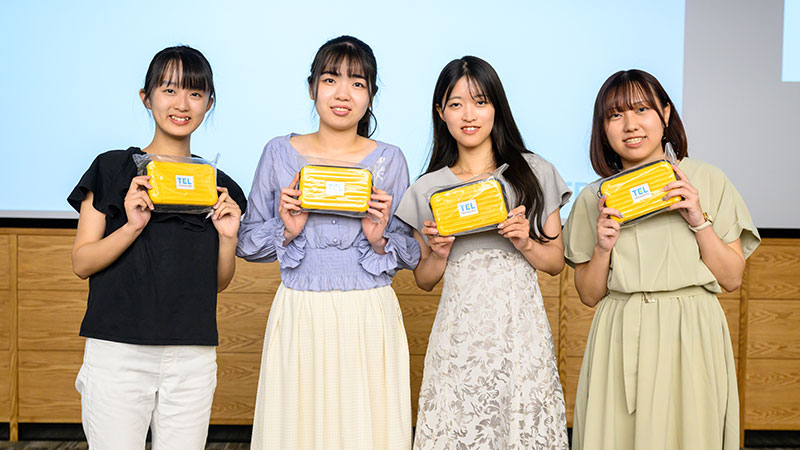
By actively engaging both their hands and minds, the students found inspiration. Apparently, this approach also helped them intuitively grasp the importance of innovation in semiconductor technology. “I learned the importance of teamwork in solving real-world problems,” said one participant. Another participant mentioned that discussions with people from different backgrounds, academic fields, and language regions were the most stimulating. Evidently, networking with others was another benefit of this workshop.
The most impressive thing about this workshop was how the students smiled when they were struck by inspiration. At times, the discussions grew so lively that the students appeared to tune out Moriya’s remarks. Their lively faces were the proof that innovation stems from moments of joy and excitement. Technological innovations that contribute to a better society will certainly come from the joyfully inspired people.
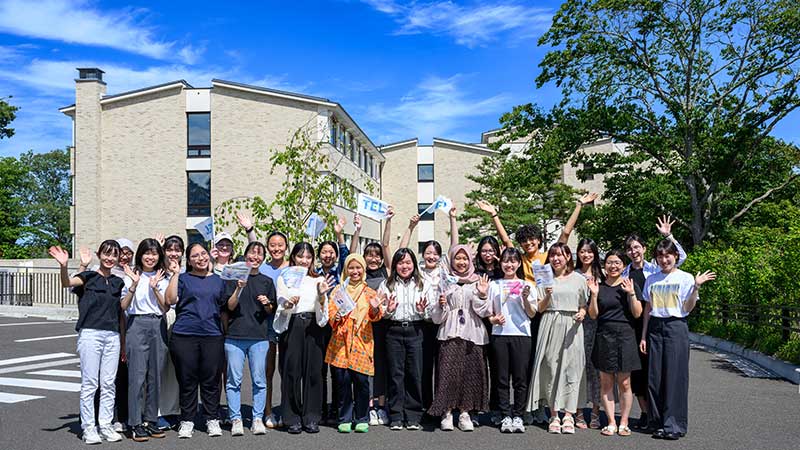
- This article reports on a program sponsored by UPWARDS (the U.S.-Japan University Partnership for Workforce Advancement and Research & Development in Semiconductors), of which TEL is a member.



